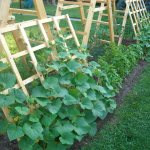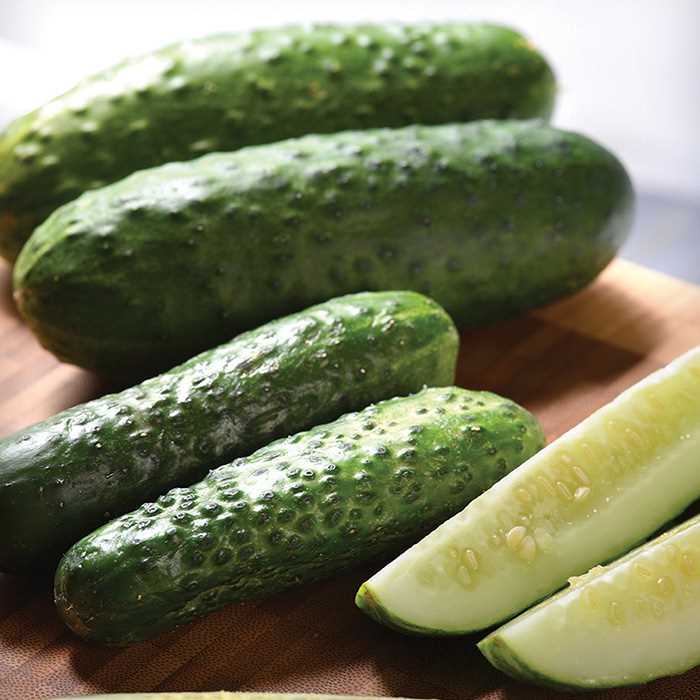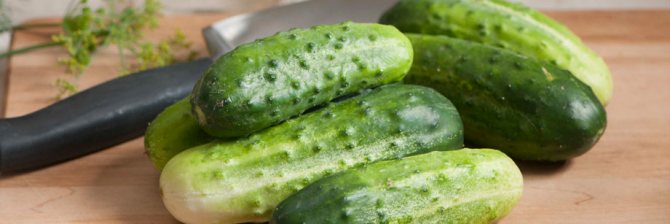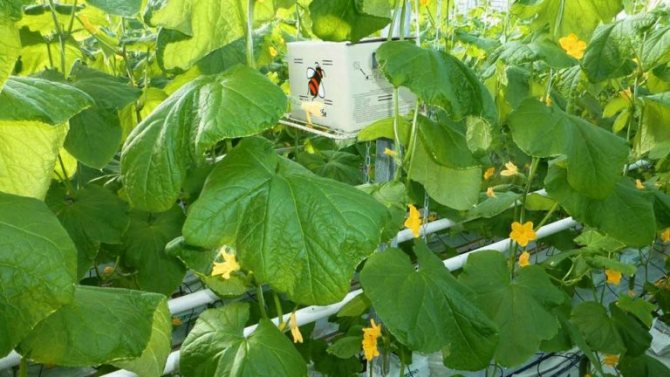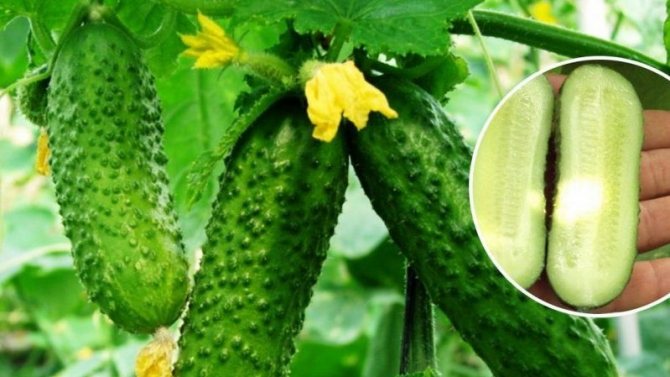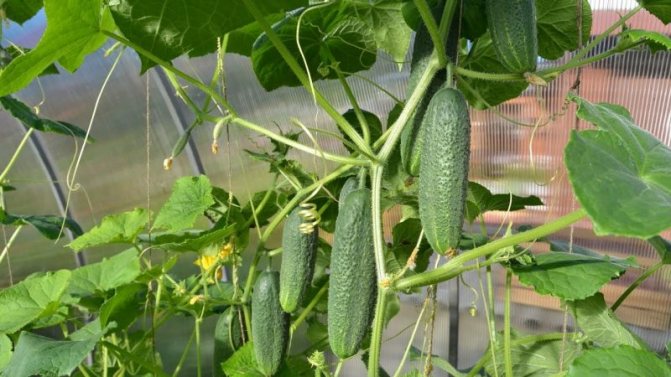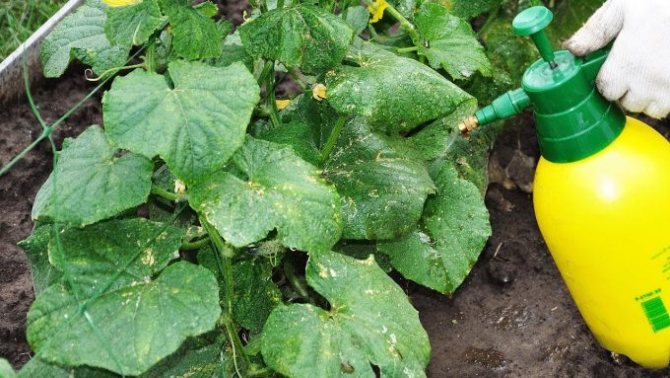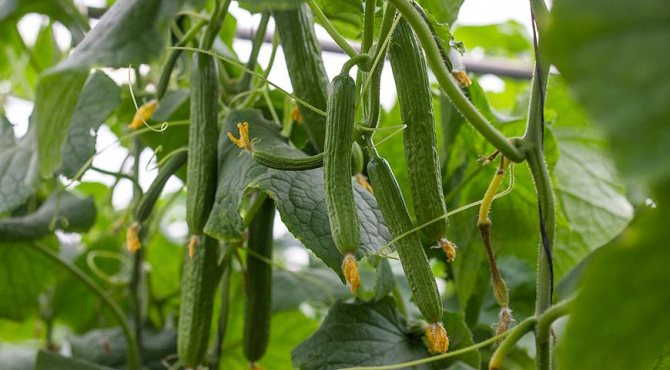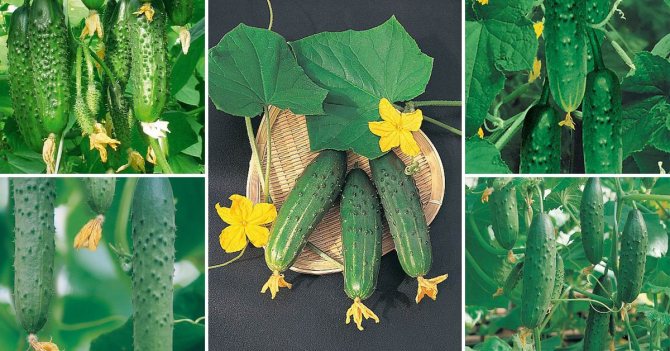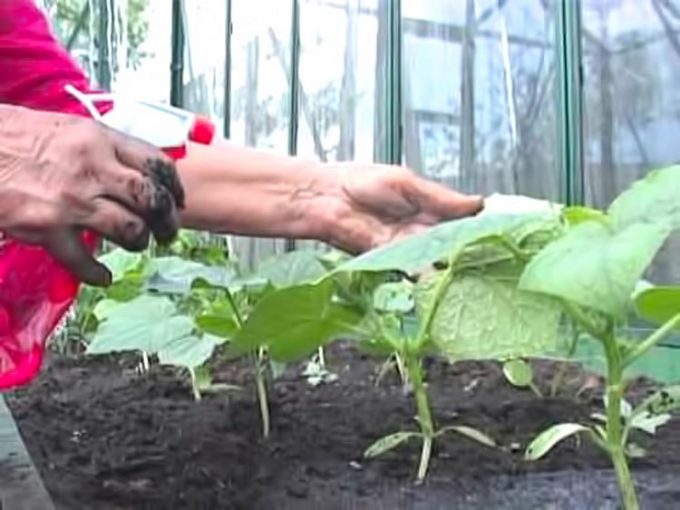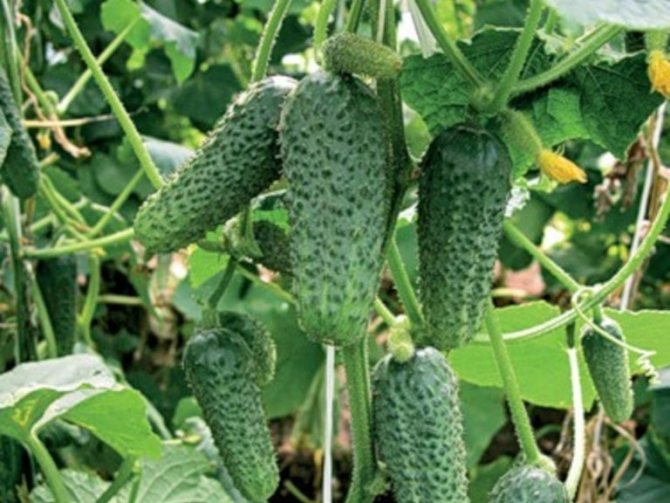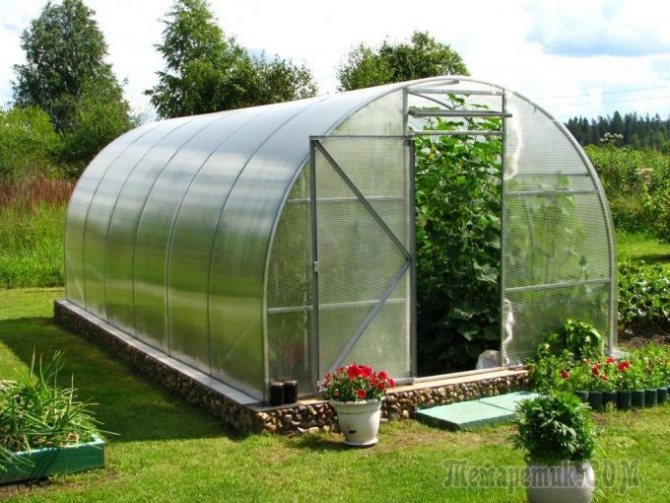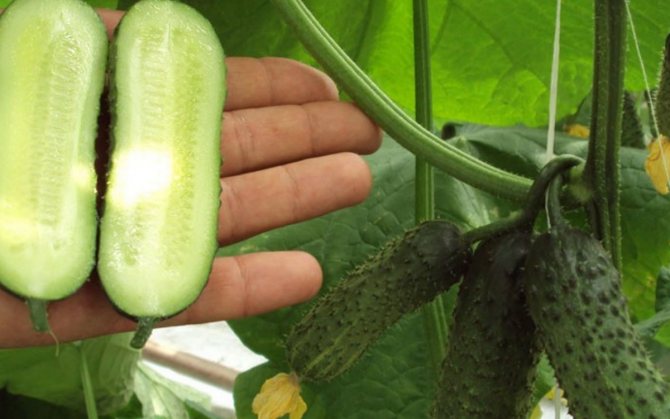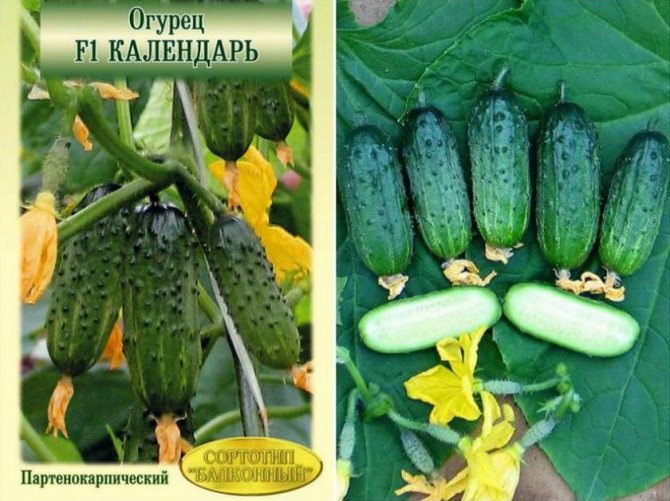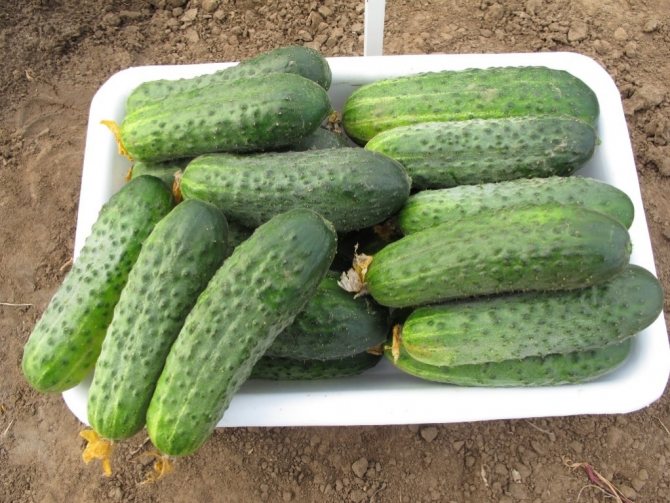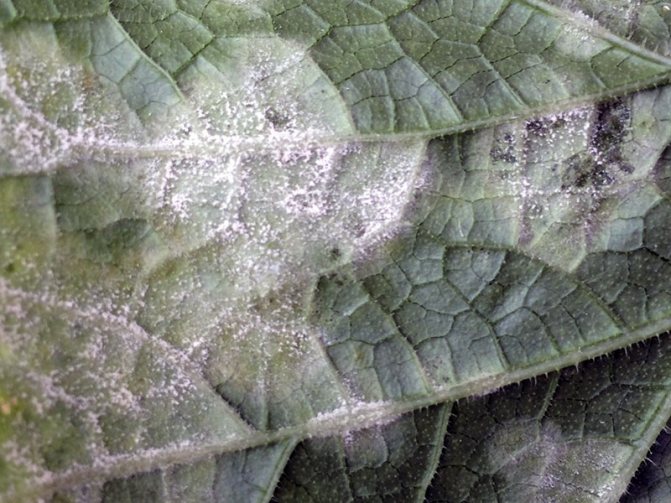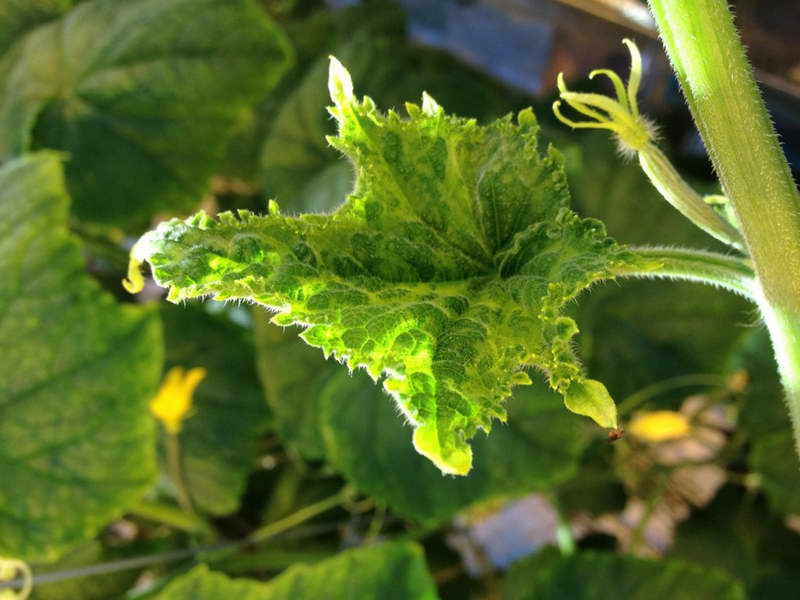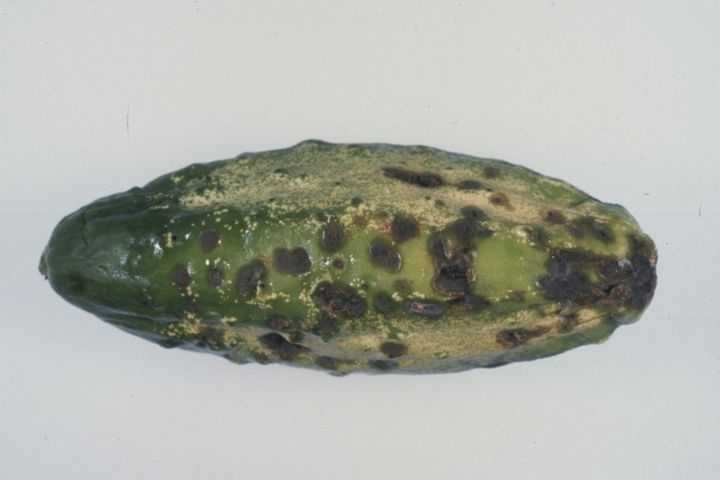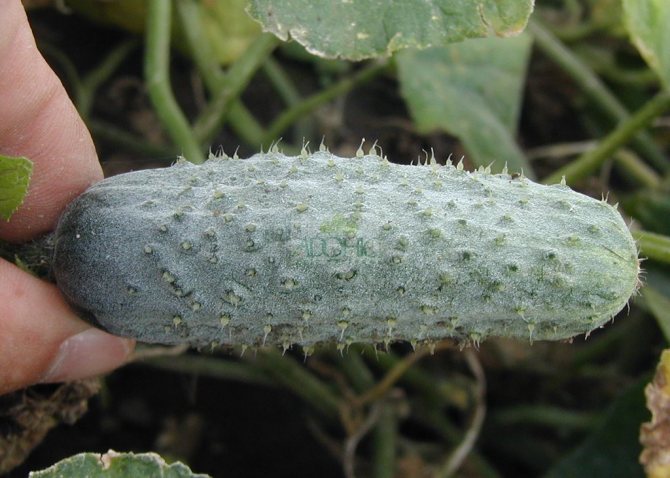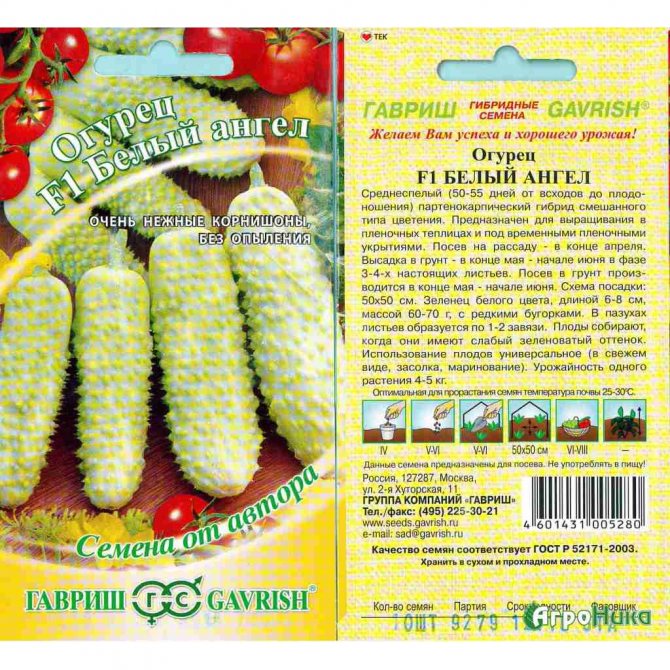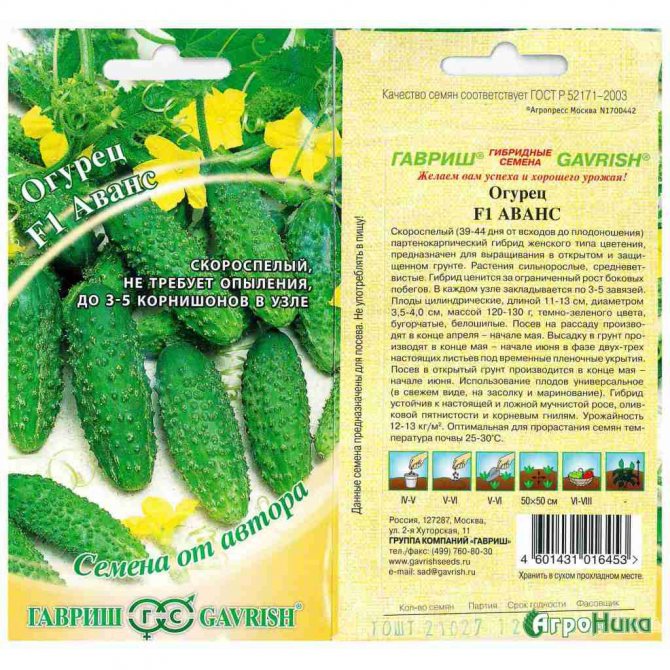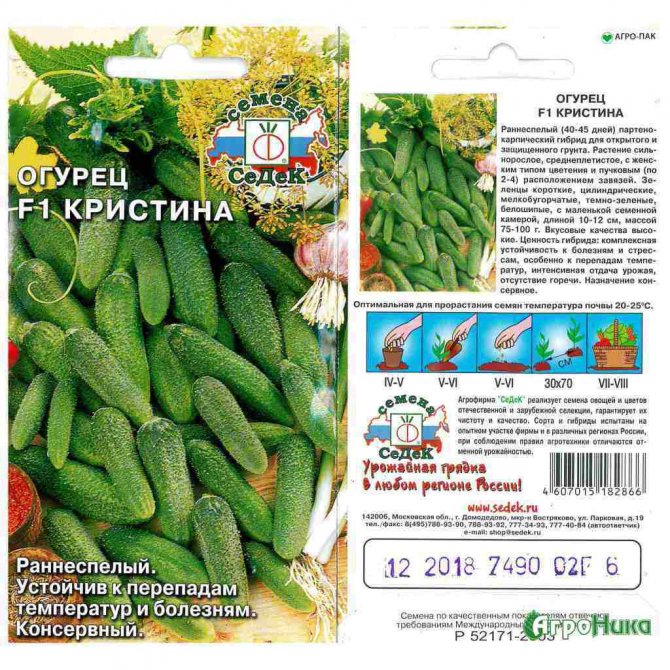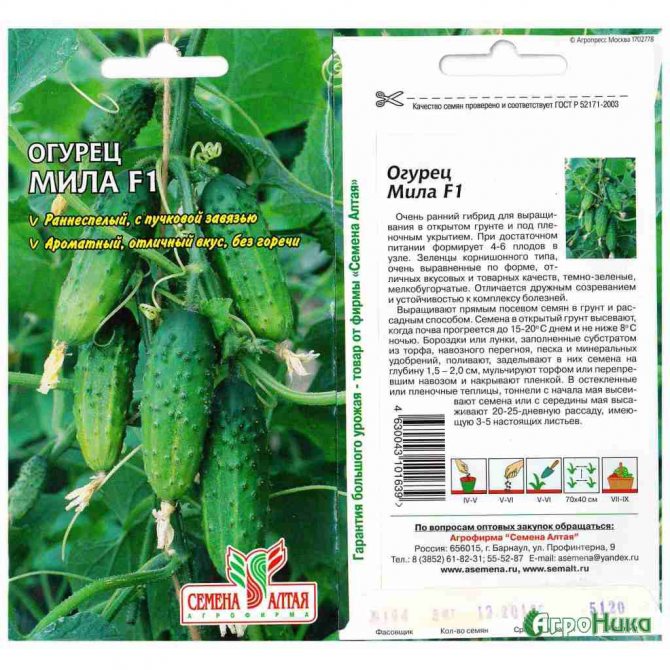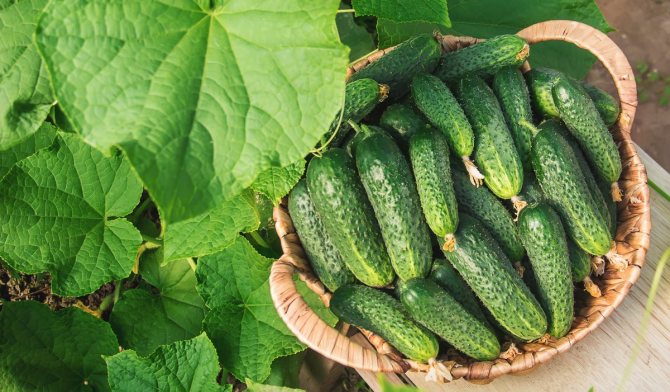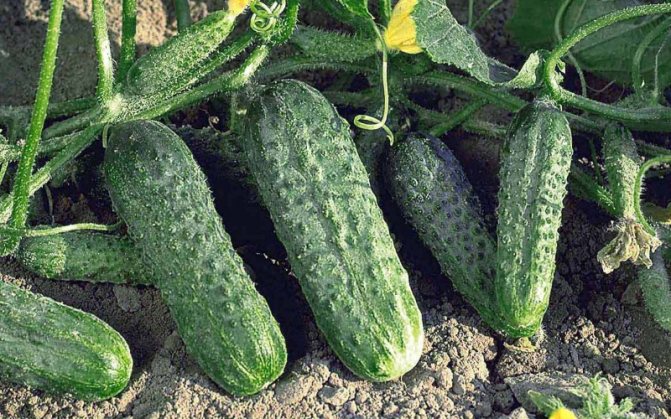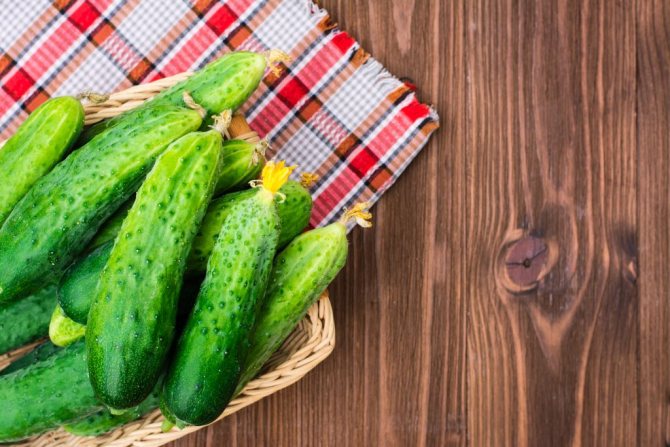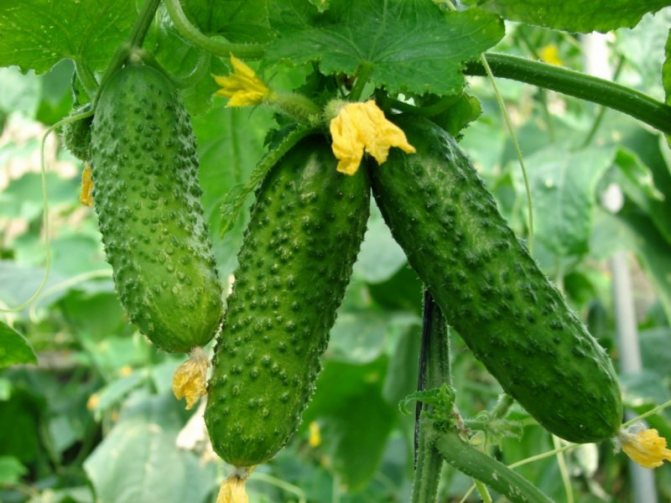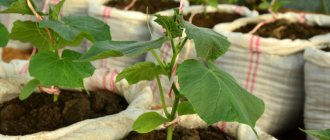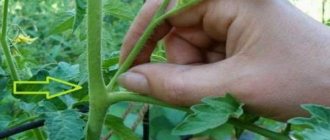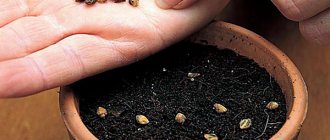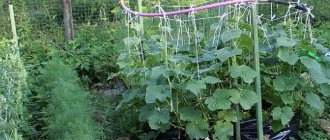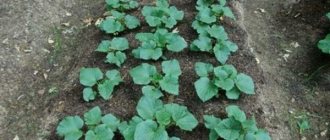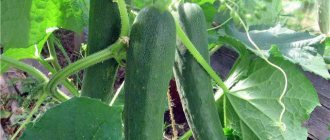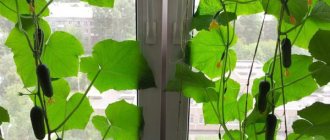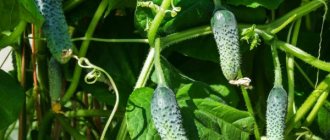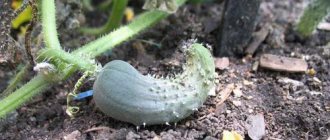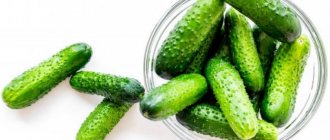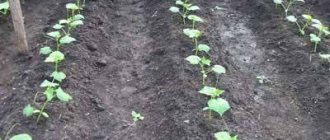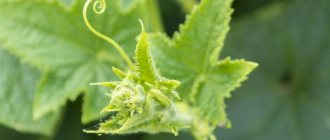Parthenocarp is a natural phenomenon when the fruits of plants are formed without pollination and do not have seeds inside. For example, everyone knows seedless pear, raisins, tangerines, oranges and seedless persimmons. With regard to cucumbers, it is not always clear: parthenocarpic hybrid of cucumbers - what does this mean? Such a phrase is found on bags of seeds, but most gardeners ask questions: how such hybrids are obtained, what quality of greens they have, is the productivity of parthenocarpics high and are there any peculiarities of their cultivation.
Parthenocarpic hybrid - what is it?
Many novice summer residents will definitely be interested in what the term "parthenocarpic" means. It should be noted that this is a specific group of cucumber varieties, to which only modern breeding finds can be attributed. All of them were bred thanks to the long and very laborious work of breeders.
Speaking about the main feature of the considered group of cucumber varieties, it should be noted that it consists in the fact that to ensure the fruiting of plants grown from the seeds of parthenocarpic cucumbers, it is not necessary to pollinate the peduncles. This is due to the fact that only female flowers and a remarkable fruiting rate are characteristic of the varieties assigned to this group.
Benefits
What is a parthenocarpic cucumber hybrid? Considering this category, it should be noted that the varieties assigned to it can be characterized by a number of advantages. They will undoubtedly appeal to summer residents.
Parthenocarpic cucumber variety - what is it? First of all, this is a type of seeds that, after planting in the ground for a short time, demonstrate excellent growth, as well as immunity to various types of pests, manifested at different stages of plant development.
As for the fruiting of parthenocarpic type cucumbers, its indicators are also at a high level: the yield is quite high, and the process of cucumber ripening does not stop for a moment from the moment the first ovary is formed until the very frost. A significant advantage of this class of cucumber varieties is that for the appearance of fruits on the bushes, the help of bees is not required at all, since the flowers do not need pollination. This feature of plants allows them to be grown even in greenhouse conditions, without carrying out the tedious procedure of self-pollination.
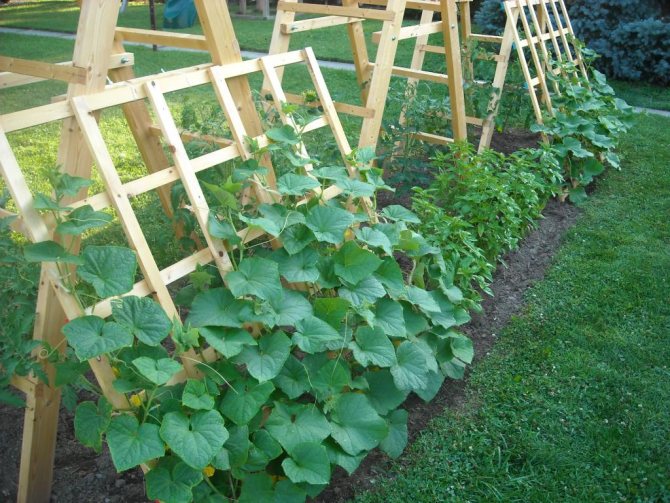
Landing dates
In greenhouses, varieties are grown that are divided according to planting seasons:
- winter and spring;
- spring and summer;
- summer and autumn.
By adhering to this periodicity, you can provide yourself with a year-round harvest.
Seed planting in a heated greenhouse begins in December.
Seeds are planted in open ground in the first half of May, when the ground warms up to the desired temperature (not lower than + 10 ... + 12 ° C). And the threat of recurrent frosts no longer exists. If you are the owner of warm beds, then sowing on them can be done 2 weeks earlier. The beds are covered with foil.
For seedlings, seeds are sown in April-May, depending on the ripening period of the variety.
Table: approximate dates for sowing cucumbers in open ground and for seedlings
| Region | Yuzhny | Central, Northwestern | Privolzhsky | Ural | Siberian | Far Eastern |
| Sowing seeds under the film | First decade of March | Second decade of April | First decade of April | Second decade of April | End of April | End of April |
| Transplanting | First decade of April | Second decade of May | First decade of May | Second decade of May | The end of May | First decade of June |
How to prepare seeds for planting
Parthenocarpic cucumber - what does it mean? Speaking about this group of varieties, most summer residents first of all note that they are ideal for growing in a greenhouse. According to them, this process is quite simple and does not require any special gardening skills. In order to harvest a high-quality crop on time, you just need to follow the prescribed instructions.
Seeds of any variety of parthenocarpic cucumbers need preliminary processing before the process of planting them in the ground. This process involves heating them for three days at a temperature of +50 degrees, and then one day at a higher temperature - 70 degrees.
As practice shows, an excellent result is also obtained by preliminary soaking of seeds in a special solution that helps to destroy harmful organisms that can harm the plant at all stages of growth. A solution suitable for soaking seeds can be purchased at a gardening store or made yourself from boric acid, zinc and manganese sulfates, copper sulphate (100 g of each ingredient must be taken), as well as 20 g of ammonium molybdate. The process of soaking seeds in such a solution must be carried out for 10-12 hours. Then they should be thoroughly dried.
Characteristics and properties
Parthenocarpic cucumbers differ in purpose:
- for cultivation in open or protected ground;
- for consumption fresh or canned;
- for growing in large agricultural complexes using intensive technologies and small-scale commercial production in film greenhouses.
To find out which hybrid is suitable for each type of condition, you should carefully read the description of the seed manufacturer.
By the nature of growth, seedless cucumbers are divided into:
- weak, medium and vigorous;
- with a pronounced central shoot (determinant) and multiple branching of equal-sized shoots (indeterminate);
- weakly or strongly branching;
- with predominantly female flowers or the presence of flowers of both sexes;
- located evenly on the shoot or formed in the form of bunches.
The newer bunch-type hybrids are potentially more productive.
Parthenocarpic hybrids vary considerably in fruit type. Here gardeners have a wide choice from elongated, thornless forms of salad design to short-fruited pubescent cucumbers without bitterness and voids with high pickling qualities.
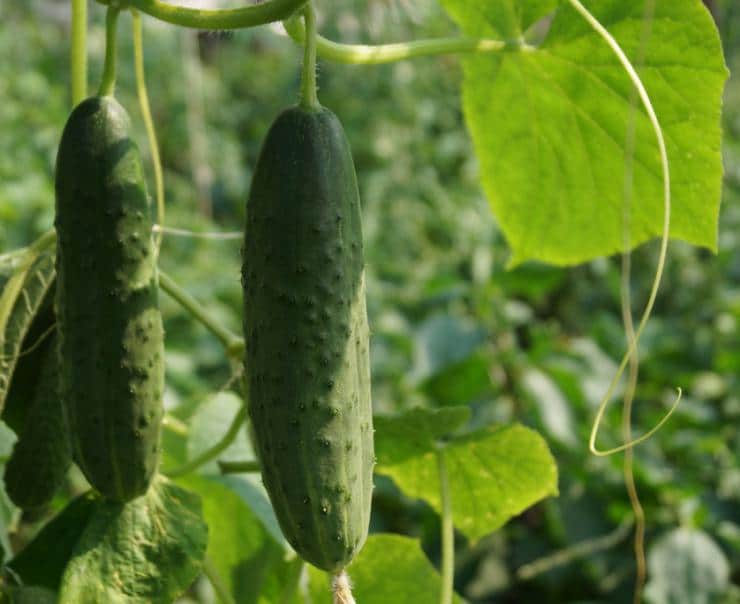

Elongated salad cucumber
Planting seeds
Seeds of cucumbers of parthenocarpic varieties intended for breeding seedlings must be planted in pre-prepared pots or special nurseries filled with a peat mixture. They need to be immersed to a relatively shallow depth - about 2-3 cm.
As soon as the seeds begin to sprout, the seedlings must be provided with good lighting, which should be either natural (sunny) or created using phytolamps.
Also, during the appearance of the first shoots, it is necessary to begin to make abundant watering of the plants using the sprinkler system.
Direct planting of sprouted seedlings should be carried out only when at least five leaves are formed in the sprouts, and their height reaches 25-30 cm.
In the process of growing parthenocarpic cucumbers, fertilizers must be periodically applied under the plants, which must be liquid and complex.As for the optimal temperature conditions, the most suitable for growing the type of plants under consideration is the regime of 18-25 degrees, and the indicator should not fall at night.
How to properly plant parthenocarpic varieties
Cucumber varieties that can bear fruit without insect pollination are best grown in greenhouses; in the open field, the quality of the fruit is lower.
Zucchini variety
Seed for seedlings is planted in early December. Pre-planting material is soaked in a solution of a growth stimulator, it is enriched with substances useful for plants.
After that, the seeds are planted in specially prepared soil to a depth of 1 to 2 cm.
[alert color = "yellow" icon = "thumbs-o-up"]Note! You can make the ground mixture yourself, but it is better to purchase it in a specialized store [/ alert]
The soil is poured into a suitable container; peat cups are best suited for this purpose.
After the first shoots appear, the amount of light in the room must be increased. The temperature in the room with seedlings should be at least 25 degrees. The temperature should drop at night.
After the first 5 full-fledged leaves are formed in the plants, they can be transferred to the place of constant growth in the greenhouse.
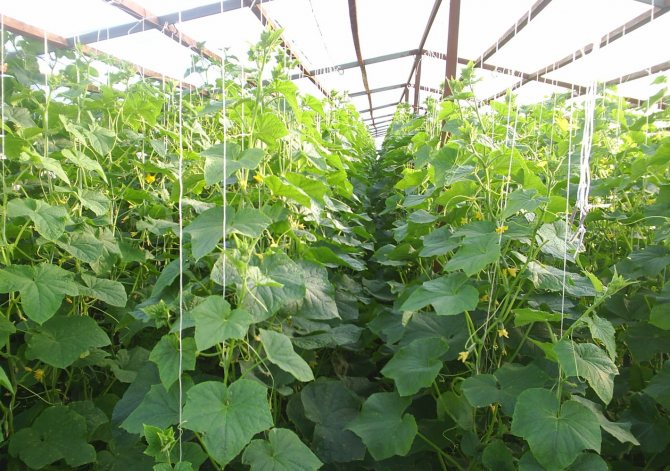

Greenhouse cucumber hybrids
If the seedlings grew in peat pots, they are planted in the holes along with the container. This method makes it possible to minimize the risk of damaging the root system of plants during transplantation.
You can, of course, plant seeds directly on the garden bed in the greenhouse, but for this purpose you will have to start heating this room much earlier. It is necessary that by the time of sowing the greenhouse soil is sufficiently well warmed up.
Some parthenocarpic varieties are suitable for growing not only in a greenhouse, but also in open beds. These hybrids can be grown in seedlings and sown directly into the hole in the garden.
Formation of bushes
Any competent summer resident should know how to make dense bushes that will give a bountiful harvest. Practice shows that suitable results can be achieved by correct pinching of seedlings.
Parthenocarpic cucumber variety - what is it? Their main feature is that this group of plants has a characteristic feature - they are capable of producing a large number of lateral shoots.
Correct pinching of plants of this type is carried out in the axils of the first five leaves, from which not only shoots, but also flowers are removed. After that, you need to leave about 6 shoots located on the sides, the length of which will not be more than 20-25 cm. As for the central whip, it must be fixed on a support, tied with threads. As soon as it reaches the permissible length, the top of the plant should be pinned.
Actually, this is where all the features of caring for seedlings of cucumbers of the group in question end. Next, we will pay attention to some of the best varieties of parthenocarpic cucumbers.
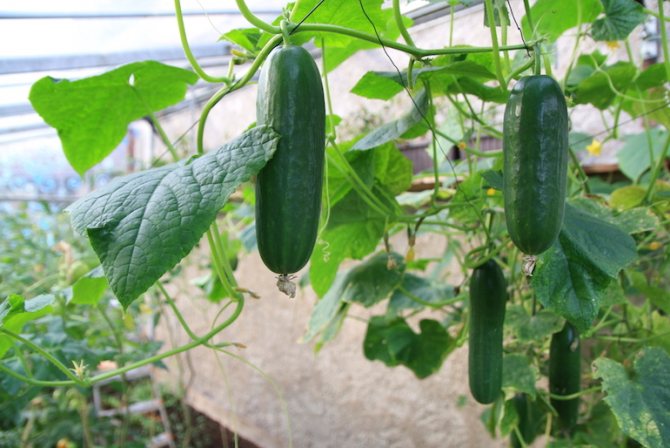

Features of growing parthenocarpic cucumbers
Hybrids grow under the same conditions as seed varieties. Parthenocarpic cucumbers are planted on well loosened medium loamy soil. Such soil is highly oxygen-permeable. Planting is done in the middle of winter. The soil is great for cucumbers after cabbage, peppers, onions and other vegetables.
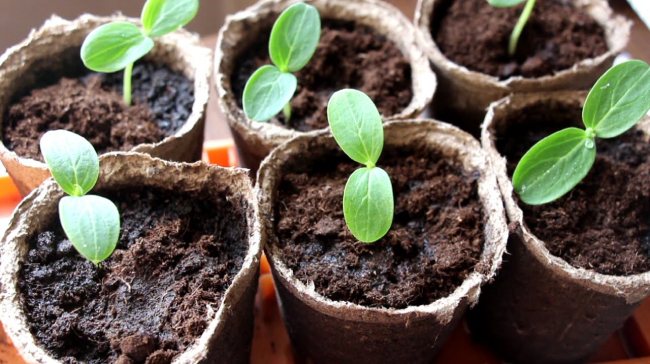

Seedlings of cucumbers
How to plant seeds
The soil needs to be warmed up to 15-18 ° С. The seeds can be planted in soil and peat pots. The optimal distance between the holes is 50 cm, and between the rows - 1 m. It is not recommended to plant seeds closer, since the bushes grow large with a powerful root system. Preparing the soil for planting:
- Before planting, you need to dig up the ground, add half a glass of ash and 3 liters of humus to each hole.
- The depth of soil warming is 30–40 cm.If the soil temperature is less than 15 ° C, the seeds will die.
- The seeds are planted to a depth of 12–16 cm. After planting, the bed is covered with PVC. The film will keep the soil warm and moist.
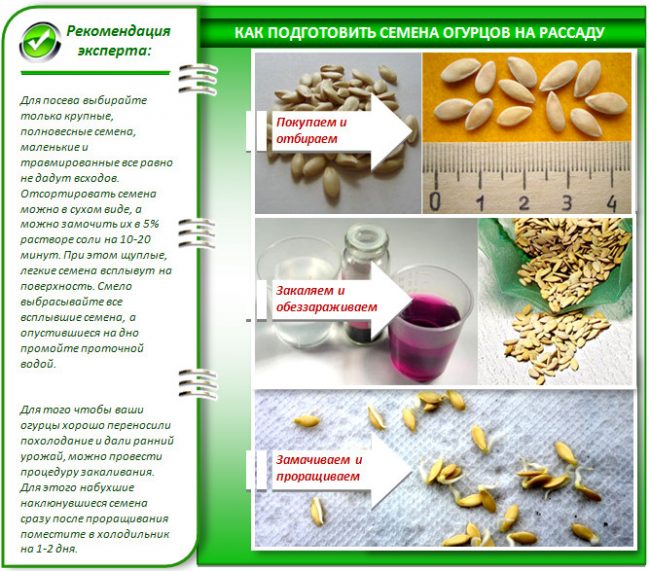

Preparing cucumber seeds for planting
Seedling care
After the germination of the first shoots, the film is replaced with a covering material. In the afternoon it is removed. It is recommended to place 3 liter water bottles between the holes. During the day, the liquid will heat up, and at night it will give off heat and maintain the air temperature at 20-25 ° C. The optimum soil moisture for growing cucumbers in greenhouses is 75%.
Weeding and watering
You can simplify the care of the beds using mulching. After the next weeding, it is recommended to cover the soil with dry grass (mulch). It will hinder the growth of weeds, reduce moisture evaporation, and reduce the likelihood of infection of cucumbers with powdery mildew. The soil must be loosened every 4-5 days. The maximum loosening depth is 10–12 cm.
Water the plant every 3 days. During the period of active fruiting, the interval is reduced to 2 days. Water is defended before watering. The liquid should be warm. In hot weather, watering is plentiful, but you need to monitor soil moisture. One watering can should be enough for 2 adult plants.
Top dressing


Fertilizing cucumbers
During the growth period and during fruiting, cucumbers cannot do without fertilizers. Top dressing is carried out once every 9–12 days. At the initial growing season, urea, manure infusion, ammonium nitrate solution are used. Potassium-phosphorus fertilizers (superphosphate, potassium sulfate, etc.) are useful for fruiting. To prepare a mullein, you need to mix 200-250 g of manure with 10 liters of water. In bad weather, foliar feeding is needed:
- boric acid water (5-10 g per 10 l of water);
- iodine with milk (30 drops of iodine and 1 liter of milk per 10 liters of water, leave for 12 hours).
Bush formation
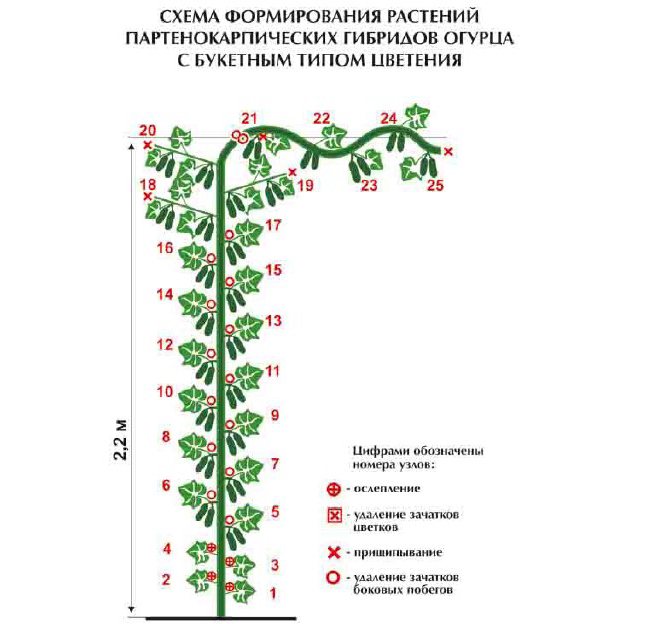

Scheme of parthenocarpic formation
Flowers are formed on the main lash, so the central stem is not pinched. All lateral shoots and sinuses of the first five to six leaves are removed. This method is called blinding. The procedure is carried out to direct nutrients to the development of the plant. The shoots are left higher, but their length is reduced to 20 cm. Features of the formation of a bush:
- From a height of 0.5 to 1.5 m, the shoots are pinched above the second leaf.
- After 1.5 m, the shoots are pinched over the fourth leaf.
- The crown of the plant is thrown over the top wire after the main stem reaches the top of the trellis.
- At a distance of 0.6 m from the ground, pinch the crown of the plant.
F1 April
This variety is great for growing green vegetables in spring greenhouses. The plant is capable of giving the first harvest literally in 45-50 days from the moment of planting the seeds, and the harvest given by this variety is quite stable and long-lasting. Moreover, this variety shows serious resistance to various diseases, which is its great advantage.
Summer residents note that F1 April is a frost-resistant variety, the fruits of which have excellent taste. They are best used for making fresh salads. The average weight of the fruit is from 150 to 300 g.
F1 Zozulya
F1 Zozulya is one of the best varieties of parthenocarpic cucumbers for greenhouses. It is very fond of both beginners and experienced summer residents, because in a minimal time period the plant gives an excellent harvest, represented by dense fruits with a thorny surface, the length of which reaches 22 cm.
Cucumbers F1 Zozulya do not turn yellow and retain their presentation for a long time. For cooking, they are best used fresh.
Cucumber variety F1 Zozulya has excellent resistance to various diseases, and in particular to olive spot, as well as to cucumber mosaic.
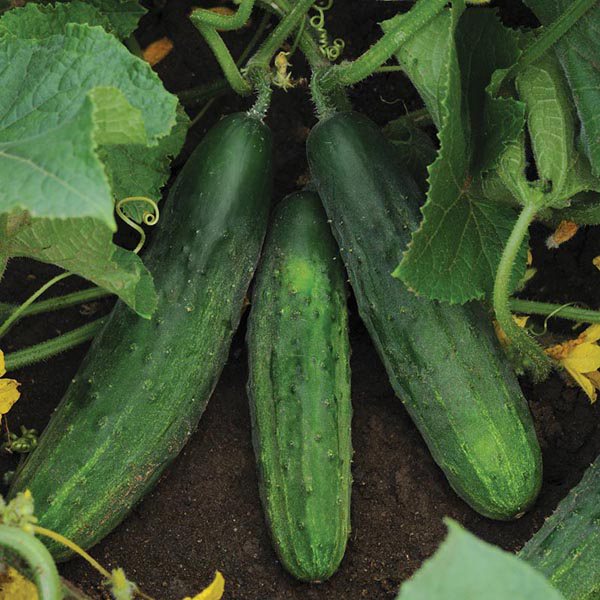

Diseases and pests
| Powdery mildew Ways to fight:
|
| Cucumber mosaic Ways to fight:
|
| Olive spot Ways to fight:
|
F1 Emelya
One of the favorite varieties of summer residents is F1 Emelya - a cucumber, which is somewhat suitable for canning. The variety in question belongs to the category of early ripening. Moreover, it is ideally grown both in open beds and in greenhouse conditions.
As for the characteristics of the fruits, they are characterized by a dark green color, as well as large tubercles located along the entire length of the cucumbers. On average, the F1 Emelya fruit reaches only 12 cm in length, when ripe they have an amazing taste and are ideal for pickling.
As in the other cases considered, Emelya's F1 has a high resistance to diseases of various kinds.
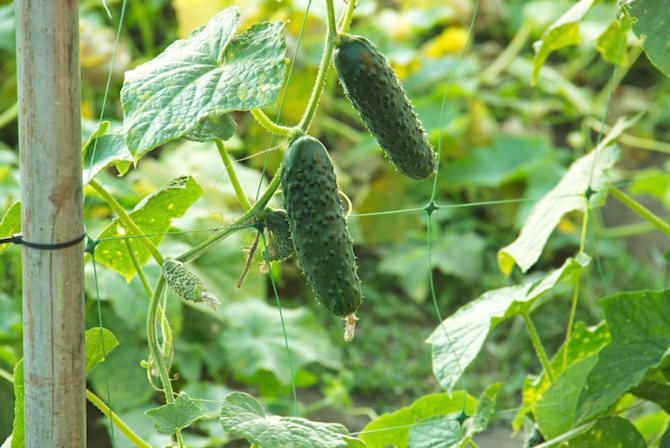

F1 Regina-plus
One of the best varieties of parthenocarpic cucumbers for open ground is F1 Regina-plus. Summer residents note that this particular variety is distinguished by high productivity, as well as early maturity. Experts in the field of agriculture note that with only 1 sq. m of bushes of this variety of cucumbers, in the first month of fruiting, you can collect about 15 kg of vegetables.
This variety, like all of the above, has excellent indicators of frost resistance, as well as protection from the negative effects of pests. Moreover, the advantage of this variety is that a bush grown from a seed does not need artificial shaping. This is due to its reduced lateral branching ability.
On average, the fruits of this variety of cucumbers reach a size of about 15 cm. On their ideally green surface there are a small number of large thorns. The fruit tastes good and is great for canning.
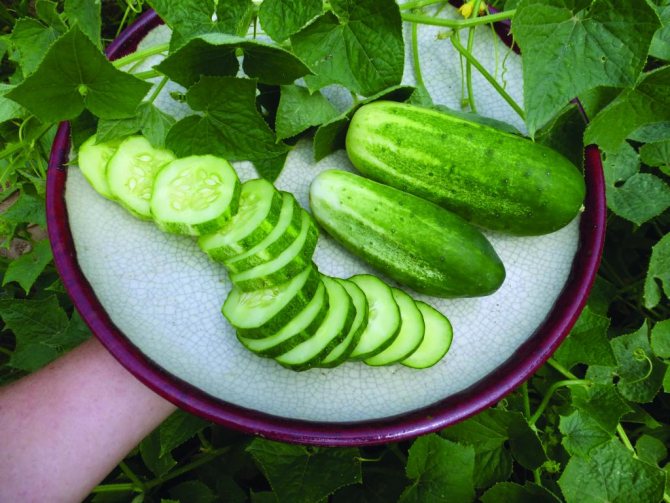

A quick look at popular samples - new hybrids and good pickling varieties
The range of such hybrids is quite wide, in addition, there is already real evidence that this method really works and allows you to get a good harvest. Among the parthenocarpic cucumbers, there is also a classification into early maturing, pickling and high-yielding varieties. When buying, you should also take this factor into account, because otherwise the chances of success will be lower. How to grow in slotted bags is shown here.
Varieties of parthenocarpic cucumbers for open ground:
- «Fun company F1 " - early ripening hybrid. Fruits are small, rounded, with an average size of 9 to 13 centimeters. Differs in high taste characteristics, without characteristic bitterness and yellowness. Suitable for salting and fresh consumption. Resistant to common diseases and pests. The fruits ripen within 43 - 48 days after planting.
- «Zozulya F1"- a highly productive variety, more suitable for sheltering structures. Suitable for planting in open ground in warm enough climates. Fruits are cylindrical in shape, from 14 to 22 centimeters long. Mid-season, harvest can be obtained within 45 - 50 days after planting. Usually grown as a salad type of cucumber with a relatively long shelf life and the ability to be transported over long distances without compromising the presentation. Suitable for pickling with a short storage cycle, cannot be canned with other varieties, otherwise there is a high risk of spoilage of pickles.
- «Chinese miracle"- a relative novelty in the domestic market. Very long fruits that reach 45 centimeters.Can be used for canning, while cucumbers are perfectly stored even when cut into pieces. They tolerate transportation well and do not contain the characteristic cucumber bitterness. Quite an interesting and unpretentious variety, resistant to common diseases.
- «Claudia F1"- a mid-season hybrid of the parthenocarpic type. Fruit ripening period is about 50 - 52 days after planting in open ground. Cucumbers are characterized by a rounded shape of small length (10 - 12 centimeters) without bitterness. Excellent taste characteristics, well stored and transported, very resistant to diseases. As a rule, the harvest is immediately abundant, the average length remains at the level of the gherkins, without overgrowths. The fruits are suitable for all types of homemade preparations and are tasty when eaten fresh.
- «Baby - sturdy man F1 "- a novelty, specially developed taking into account possible low temperatures. Medium early variety, ripening period from 53 to 59 days. The length of the fruit is small, 7 - 8 centimeters. Cucumbers are devoid of bitterness and voids inside, a high degree of resistance to most characteristic diseases. A versatile variety, suitable for fresh consumption and canning.
- «Emelya F1"- characterized as the most disease-resistant hybrid. Fruits reach 15 centimeters in length, suitable for pickling. Ripening occurs already about 41 days after planting in open ground. It is considered one of the most productive varieties of parthenocarpic cucumbers.
- «F1 White Angel"- an interesting variety of parthenocarpic hybrids. In open ground it grows well with late planting, if this requirement is not met, it needs additional shelter. Most often it is used fresh, but it is also quite suitable for salting.
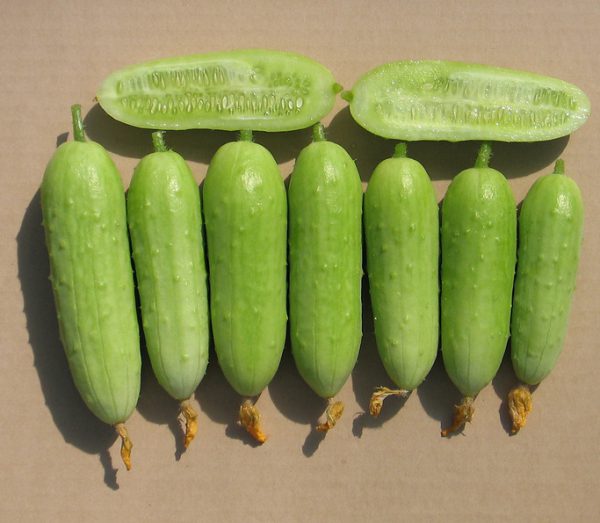

The main difference from other varieties is the characteristic feature of changing color from white to light green, which is a sign of the ripeness of the cucumber.
To ensure a good harvest, it is best to use different types of parthenocarpic cucumbers. Cultivation can be done in seedlings, and in warm climates, sowing directly into the ground is possible. Tall cucumbers need a garter or support, and in general, caring for parthenocarpic cucumbers is not much different from growing other varieties. What are the secrets of growing in the open field, you can find out at this link.
A good harvest, regardless of natural whims, is the dream of most gardeners. Unfortunately, many factors affect the productivity of the site, up to the presence of insects that can pollinate the plants. If this is not the first time you have faced this problem, it might be time to think about purchasing parthenocarpic cucumber varieties. The big advantage of such a purchase will be the guarantee of the ovaries, even without third-party intervention. The main varieties of parthenocarpic cucumbers and their differences from self-pollinating plants are given in our article. Find out about fruitful varieties of cucumbers for open ground here.
F1 Arina
Parthenocarpic hybrid - what is it? Among the varieties of cucumbers of this type is F1 Arina. The variety has recently become very actively cultivated by Russian farmers. It is great for growing both in open beds and in greenhouses.
Cucumbers of the F1 Arina variety grow quite quickly and also yield a harvest. The variety is distinguished by abundant fruiting, as well as powerful formation of side shoots, which can be left on or pinched. The plant is shade-resistant, which is another of its advantages. Moreover, variety F1 Arina is resistant to various diseases, as well as to sudden changes in temperature and even to slight cold snaps.
As for the F1 Arina fruits, they are of medium size - the approximate length of a cucumber is 15-18 cm. The fruits have a glossy surface and also have a very pleasant taste.Moreover, their value lies in the fact that they are well suited for short-term canning, as well as for salting. Most housewives still prefer to use the fruits of this variety for preparing fresh summer salads, the taste of which they emphasize very favorably.
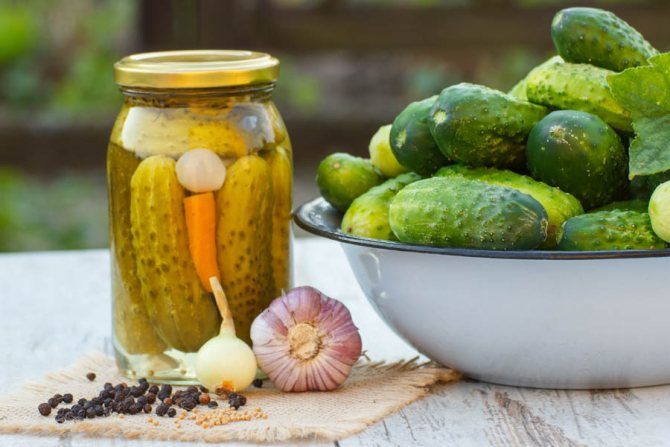

Dependence of parthenocarp on growing conditions
The property of parthenocarp can manifest itself in different ways depending on the growing conditions and care of cucumbers. So insufficient lighting reduces this property. This usually happens in cloudy weather. But after it becomes sunny, the number of zelents increases again.
With overdrying of the soil, overheating of the air in the greenhouse, the number of fruits decreases. The same happens if too much organic fertilizer is applied.
An increase in parthenocarp was noted on later lashes. So on the lower nodes of the main stem there are the least of them. There are much more of them on the middle, upper nodes and lateral shoots.
Canned parthenocarpic cucumbers
Autumn is the time for homemade preparations. Novice housewives should definitely understand that parthenocarpic cucumber varieties are not the best option for pickling and canning ingredients. Practice shows that after proper processing, the vegetables in the jars become soft, and then the fermentation process begins in them, which causes the bombing.
It should be noted that modern breeders are still working hard to develop certain varieties of parthenocarpic cucumbers suitable for canning. By the way, some of their works were crowned with success, as a result of which the F1 Emelya, F1 Arina and F1 Regina varieties were born, which are well suited as an ingredient for creating blanks for the winter.
Advantages and disadvantages
The main advantage of parthenocarpic varieties is that they can be grown even in the house without pollination. Cucumbers have no seeds, no bitterness is felt. Hybrids differ:
- long and abundant fruiting;
- good taste;
- excellent presentation;
- the same size of zelents;
- disease resistance.
Vegetables do not turn yellow, are not damaged during transportation over a long distance. Cucumbers are stored for a long time, have a beautiful emerald hue.
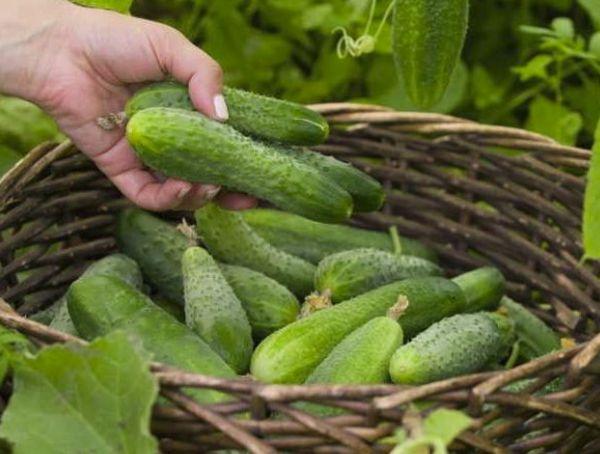

The disadvantages of parthenocarpic hybrids include the fact that they form long lashes, which require special care, constant regulation of the density of the bush, and the obligatory pinching of the shoots.
Not all varieties tolerate sharp temperature fluctuations, the seeds of parthenocarpic cucumbers are expensive, it is impossible to collect the seed on your own, since the seeds are not formed in the fruits.

